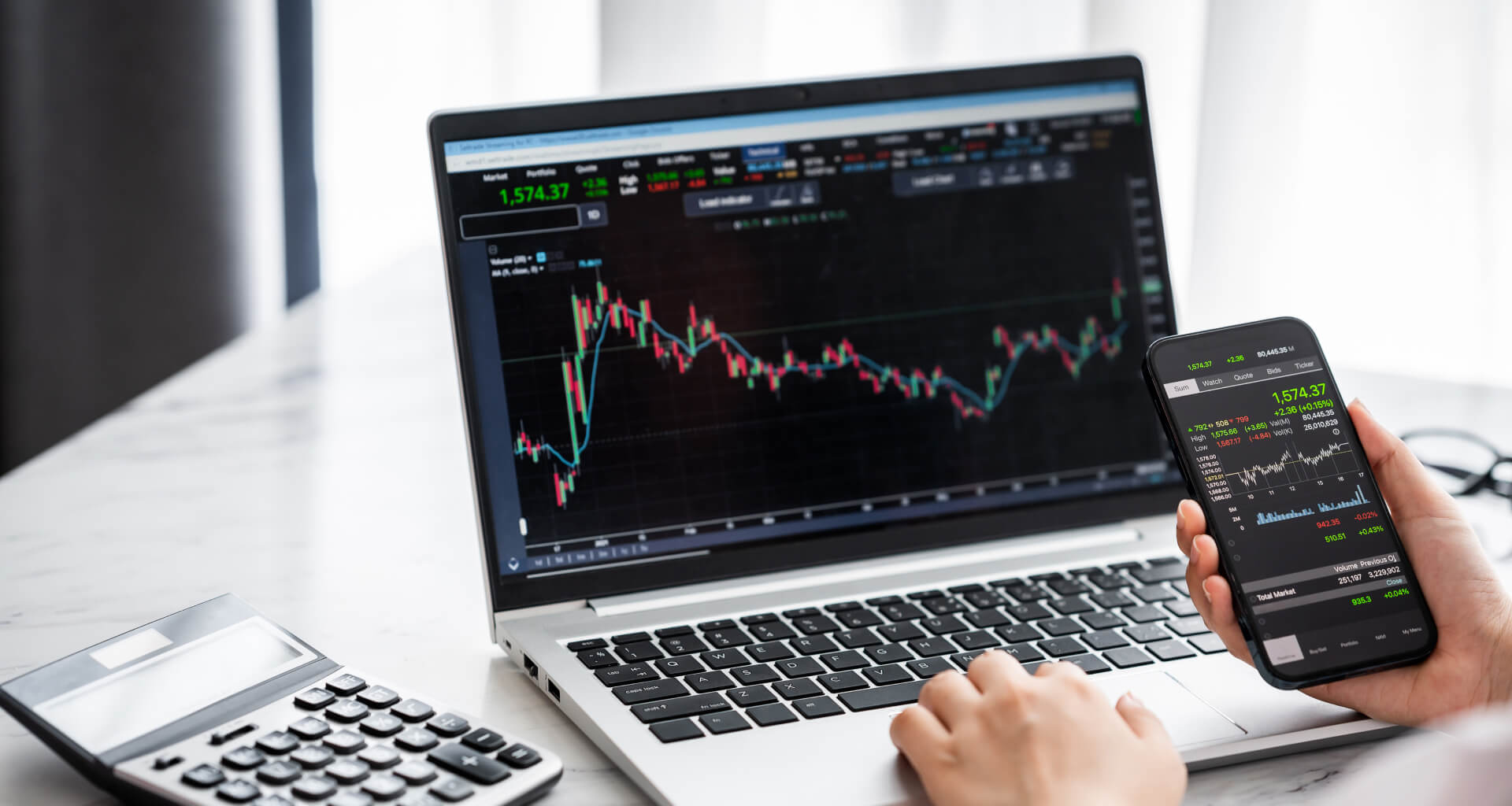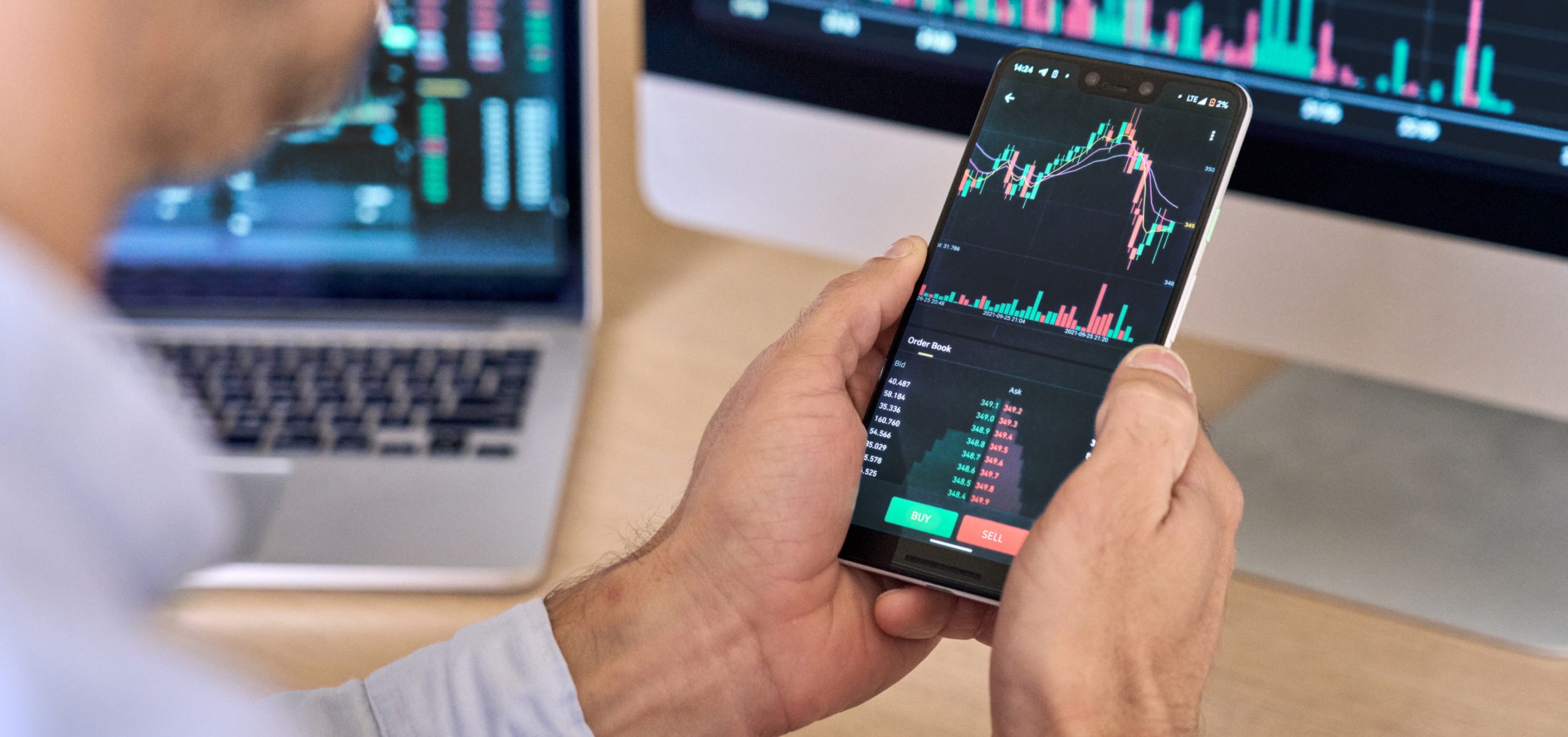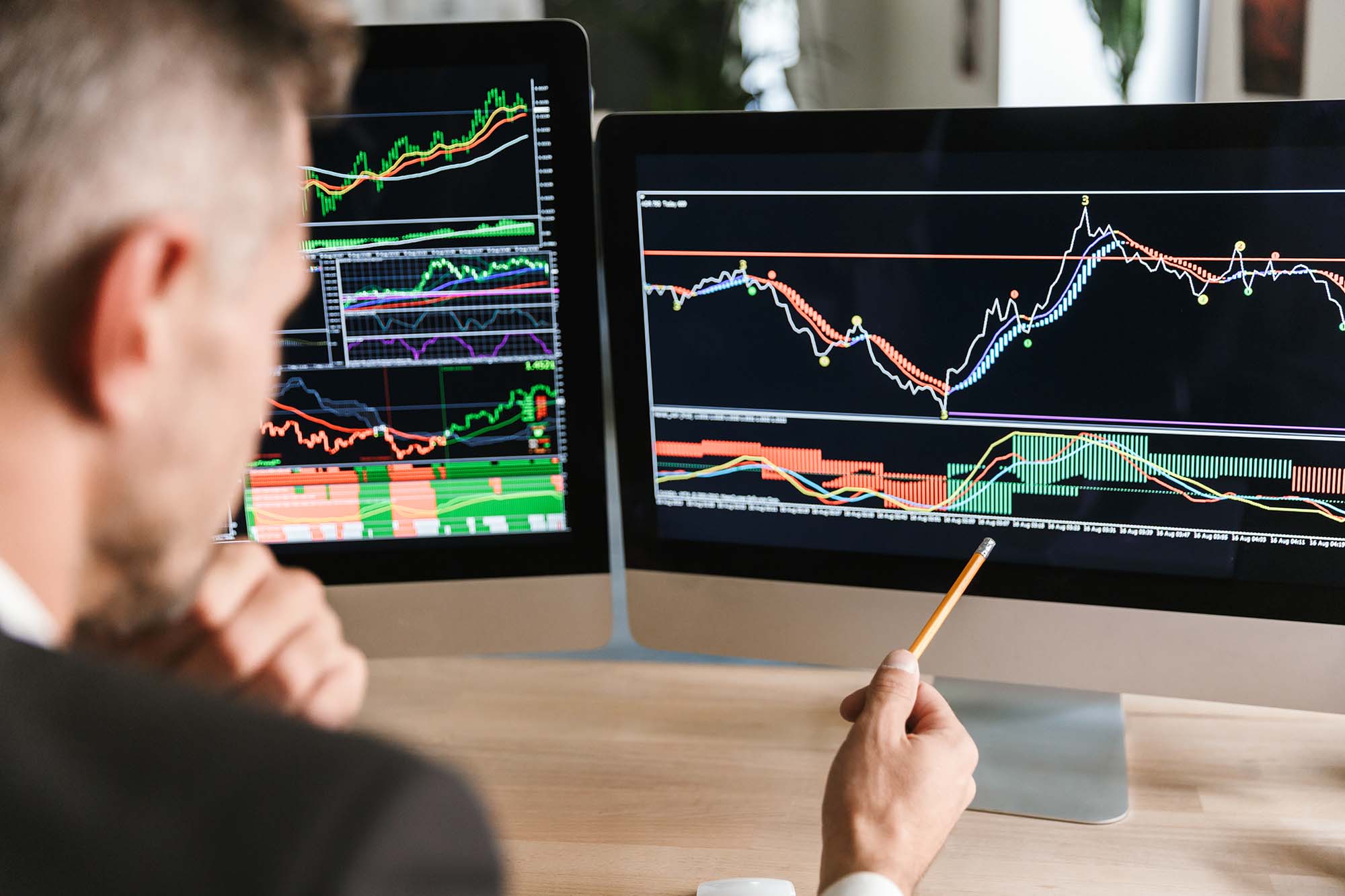Can you start day trading with $100 and make headway? Many beginners find the math harsh: limited buying power, broker minimums, commission costs, the pattern day trader rule, and tight position sizing can turn miniature account trading into a squeeze. This guide gives clear Day Trading Tips, realistic expectations, and straightforward strategies so you know if $100 can genuinely be a starting point and how to manage risk while you grow.
Suppose $100 feels tigh, or you want a faster way to access larger capital. In that case, Goat Funded Trader offers a prop firm solution that helps you qualify to trade under a funded account, increasing buying power. At the same time, you focus on strategy, risk management, and consistent execution.
What Is Day Trading, And How Does It Work?

Day trading is a fast-paced trading strategy where individuals buy and sell financial assets like stocks, options, or currencies within the same trading day. The main goal is to profit from small price changes that occur during the session. Trades can last from just a few minutes to several hours, but are always completed before the market closes, avoiding overnight risk.
This style of trading differs from long-term investing because positions are not held for days or months but opened and closed within hours or minutes. Day traders rely heavily on technical analysis (studying price charts, patterns, and market indicators) to spot opportunities. Some also use news or fundamental data to anticipate price movements.
Day trading demands quick decision-making, intense focus, and the ability to remain calm under pressure. Traders use advanced tools like real-time data feeds, charting software, and fast internet to execute trades rapidly. Strict risk management is essential; traders often set stop-loss orders and limit losses to a small percentage of their capital to avoid large drawdowns.
In the U.S., regulatory rules classify an individual as a “pattern day trader” if they make four or more day trades within five business days. These traders must maintain a minimum account balance of $25,000 and typically trade using margin accounts, which means borrowing funds to amplify returns but also risks.
Ordinary day trading strategies include scalping (profiting from tiny price movements in seconds or minutes), momentum trading (riding trends), and news-based trading (capitalizing on event-driven volatility). Each requires precise entry and exit tactics, disciplined execution, and continuous market monitoring.
Overall, day trading is a high-risk, high-reward activity that suits traders with strong market knowledge, technical skills, and the discipline to handle the fast-moving environment. It is not recommended for casual or inexperienced investors due to the complexity and potential for significant losses.
Questions to check your readiness
Have you tested your plan in a simulator? Do you understand your broker's margin rules and commissions? Can you accept daily losses without changing your plan?
Get 25-30% off Today - Sign up to Get Access to up to $800 today.
Prop firms and funded trader programs let traders trade large accounts after meeting challenge rules. They remove the need to grow a $100 account through hundreds of percent returns. Look for clear rules, fair profit splits, and fast payouts. Goat Funded Trader gives you access to simulated accounts up to 800K with trader-friendly conditions. There are no minimum targets, no time limits, and triple paydays with up to 100 percent profit split.
Join over 98,000 traders who have already collected more than $9.1 million in rewards, all backed by a 2-day payment guarantee with a $500 penalty for delays. Choose your path to funding through customizable challenges or start trading immediately with instant funding options. Sign up to Get Access to up to 800K Today, and 25 to 30 percent off.
Related Reading
- Can You Make Money Day Trading
- How Old Do You Have to Be to Day Trade
- Options Trading vs Day Trading
- Day Trading Success Stories
- Day Trading Crypto vs Stocks
- Day Trading Psychology
- Day Trading as a Side Hustle
- Why is Day Trading Restricted
Can You Start Day Trading With $100?

Yes, you can start day trading with $100, but success depends heavily on your trading strategy, broker, and discipline. Technically, many brokers accept $100 as a minimum deposit. However, starting small requires careful planning and risk management because your capital is limited, and each trade could represent a significant portion of your funds. With $100, micro-lot trading is a practical approach. This lets you trade smaller positions, minimizing risk while learning how the market works.
For example, in forex trading, opening trades with lots as small as 0.01 helps keep losses manageable. Leveraging this can amplify your buying power but also increase risk, so it must be used cautiously. Scalping is another strategy suited to small accounts. It involves making many quick trades to capture small profits, focusing on liquid markets and tight stop-loss orders. News trading, where you capitalize on market volatility from economic announcements, is also an option, but it requires fast decision-making and a good grasp of how news affects prices.
Starting with $100 should be viewed as a training ground rather than a path to quick riches. It allows beginners to develop trading skills, learn emotional control, and understand the importance of a consistent strategy. Many seasoned traders emphasize that $100 is sufficient to gain experience but won't yield significant income initially.
Risk management is crucial. Because you trade with limited capital, losses can quickly deplete funds if you don’t control risk. A common rule is not risking more than 1-5% of your account on a single trade. Strict discipline, thorough research, and realistic expectations form the foundation of trading successfully from such a small amount.
What growth can you expect realistically? To double one hundred dollars quickly, you would need very high percentage returns and accept significant risk. Consistent small percentage gains compounded over months and years offer a steadier path, though growth will be slow. Treat the first stage as skill building and capital preservation, not as a primary income source.
Would it be smarter to use the one hundred dollars as seed capital or as tuition? Many traders treat small accounts as training capital. You learn the mechanics of markets, order types, and self-control at real cost. Consider funding a larger account only after you show consistent profitability and disciplined risk behavior.
Want a checklist to carry into the market? Ask yourself, is my stop set to risk one to two percent? Do I understand the broker fees for this trade? Is this trade part of my documented plan? If any answer is no, do not place the trade.
How To Start Day Trading With $100

1. Choose the Right Broker
Starting day trading with just $100 means your choice of broker can make or break your experience. The broker you select should align with your limited capital and trading goals.
Look for Low Costs
When working with a small budget, minimizing fees is essential. Prefer brokers who charge through spreads (the difference between the buying and selling prices), instead of fixed commissions. Commission fees often have minimum charges that can quickly eat up your small capital on each trade, whereas spread-based fees scale with your trade size, making them more economical for smaller trades.
Minimum Deposit Requirements
Make sure the broker’s minimum deposit is $100 or less. Some brokers require higher minimums, which would prevent you from starting with your targeted amount.
Leverage and Margin Availability
With $100, small price movements won’t generate significant profits. That’s why brokers offering leverage are crucial. They let you control a larger position size than your actual deposit. In the United States, leverage can be up to 50:1, while in the European Union, it’s capped at 30:1 due to regulations. Check your country’s rules, and pick a broker providing the highest permissible leverage without compromising safety.
2. Select the Right Securities to Trade
When starting with just $100, picking the right assets (or securities) to trade is crucial. Since your budget is limited, you want assets that can deliver meaningful price movements and allow you to keep trading costs low.
Focus on High Volatility Assets
Volatility refers to the extent to which the price of a security fluctuates within a period. Higher volatility equals bigger price swings, which means greater potential profits on small amounts. Among all asset classes, forex (foreign exchange currency pairs) is known for its significant volatility and liquidity, making it ideal for day trading with limited capital.
Trade Major Forex Pairs
Within forex, stick to major currency pairs because they generally have lower spreads (lower cost per trade) and high trading volume, which helps ensure smooth order execution. Some of the major pairs to consider include:
- EUR/USD (Euro/US Dollar)
- GBP/USD (British Pound/US Dollar)
- USD/JPY (US Dollar/Japanese Yen)
- AUD/USD (Australian Dollar/US Dollar)
- NZD/USD (New Zealand Dollar/US Dollar)
- USD/CAD (US Dollar/Canadian Dollar)
Avoid Exotic or Less Liquid Pairs
Exotic currency pairs or low-volume stocks tend to have wide spreads and more unpredictable price behavior, which increases trading costs and risks, something you want to avoid when starting.
3. Build Your Trading Strategy
A well-defined trading strategy is the backbone of success, especially when starting with only $100. This plan should outline exactly how and when you trade, how much you risk, when to enter and exit trades, and how you protect your capital.
Educate Yourself Continuously
Before actively trading, invest time learning trading concepts, technical analysis, and market behavior. Consider enrolling in reputable courses or using alert services where experienced traders share insights and trade ideas. Knowledge builds confidence and reduces costly mistakes.
Choose the Best Time to Trade
Market volatility varies during the day. For forex majors like EUR/USD and GBP/USD, trading during the overlapping hours of the London and New York sessions is ideal. This overlap (roughly between 8 AM and 12 PM EST) brings increased volume and sharper price movements, offering better trading opportunities.
Decide Trade Size and Frequency
With $100, focus on executing fewer but larger-position trades rather than spreading your funds thin over many small trades. A good guideline is to invest about 60% of your capital ($60) in a single trade. Avoid holding multiple trades simultaneously since your bankroll is tight, and managing risk for several positions becomes challenging.
Entry Techniques
Use technical indicators to pinpoint entry points:
- Candlestick and chart patterns help spot reversals or continuations
- Oscillators (like RSI) identify overbought or oversold conditions
- Momentum indicators show the strength of price moves
- Volume and volatility measures can confirm trend strength
Risk Management (Set Stop-Loss Orders)
Protecting your capital is vital. Limit your risk to about 3% of your $100 per trade, which equals $3. This may seem high compared to typical 1-2% rules for larger accounts, but it is necessary when starting small.
If your trade size is $3,000 (due to leverage), your stop-loss should be placed no more than 0.1% away from your entry price. For EUR/USD at 1.1450, your stop-loss would be near 1.1439.
Exit Strategy (Use Trailing Stops)
Instead of a fixed stop-loss, use a trailing stop that automatically adjusts as the market moves in your favor. This allows profits to grow while protecting your gains if the price reverses.
Understand Your Profit-Loss Ratio and Win Rate
Aim for a high reward-to-risk ratio, such as 3:1, meaning when you risk $3, you target $9 profit. Even with a win rate as low as 30%, this can generate overall earnings over time.
4. Start Trading
With your broker chosen, securities selected, and strategy in place, it’s time to open your trading account and put everything into action.
Open Your Trading Account
Visit the official website of your chosen broker and register for an account type that supports margin trading with low minimum deposit options (e.g., $100). You’ll provide basic personal details like your name, email, address, and phone number.
Complete Verification
Most brokers will require identity verification (a standard “Know Your Customer” process) by submitting government-issued ID and proof of address. This step ensures the security of your account and compliance with financial regulations.
Fund Your Account
Deposit your $100 using your preferred payment method, such as bank transfer, credit card, or e-wallet. Confirm that the funds appear in your trading account.
Download and Set Up the Trading Platform
Most brokers offer platforms like MetaTrader 4/5 or proprietary software. Download the platform, log in, and adjust your leverage settings to the maximum allowed for your region (e.g., 30:1 in Europe, 50:1 in the US).
Select the Forex Pair to Trade
Navigate to the market watch or asset list, and choose your preferred forex pair from the list of major pairs (like EUR/USD or GBP/USD).
Place Your First Trade
Open the trade dialog box for your chosen pair.
Enter your trade size based on your strategy (for example, 60% of your $100 bankroll, leveraged accordingly). Set your stop-loss or trailing stop-loss to manage risk (e.g., 0.1% below the entry price). Review all details carefully before confirming your order.
Monitor and Manage Your Trade
Track your position actively, paying attention to market movements and your trailing stop orders. Stick to your strategy strictly, avoid emotional decisions, and prepare to exit when your criteria are met.
Get 25-30% off Today - Sign up to Get Access to up to $800 today.
Prop firms and funded trader programs let traders trade large accounts after meeting challenge rules. They remove the need to grow a $100 account through hundreds of percent returns. Look for clear rules, fair profit splits, and fast payouts. Goat Funded Trader gives you access to simulated accounts up to 800K with trader-friendly conditions. There are no minimum targets, no time limits, and triple paydays with up to 100 percent profit split.
Join over 98,000 traders who have already collected more than $9.1 million in rewards, all backed by a 2-day payment guarantee with a $500 penalty for delays. Choose your path to funding through customizable challenges or start trading immediately with instant funding options. Sign up to Get Access to up to 800K Today, and 25 to 30 percent off.
Strategies For Day Trading With A Small Account

Micro-Lot Trading
Trading micro-lots means taking minimal positions, generally 1,000 units in forex trading, compared to standard lots of 100,000 units. This approach is essential for small accounts because it tightly controls risk on each trade, preventing significant losses that could wipe out limited capital. Micro-lot trading also offers flexibility and diversification; traders can spread their risk across multiple positions without overexposing the account. With smaller trade sizes, you can execute more trades and adapt quickly to changing market conditions without risking too much on a single position. The key is to carefully calculate position sizes relative to your account balance and maintain disciplined use of leverage to avoid overtrading.
Scalping
Scalping is a popular strategy for day traders with small accounts because it focuses on making many quick trades with small profit targets. This method capitalizes on minor price fluctuations, often holding positions for just seconds to minutes. Scalping suits small capital since the exposure per trade is minimal, and liquidity is crucial to ensure quick entry and exit without slippage.
Traders who scalp rely heavily on technical indicators such as MACD, RSI, and moving averages to identify entry points, and they use very tight stop-loss orders to limit losses. Although scalping demands quick decision-making and intense focus, it allows small accounts to accumulate profits steadily and reduce the risk of large drawdowns.
News Trading
News trading exploits fast-moving price reactions triggered by economic releases, earnings reports, or geopolitical announcements. For small accounts, news trading offers opportunities to capture substantial short-term moves with relatively small position sizes. Still, it requires quick decision-making and a solid understanding of how different news affects specific markets.
Monitoring economic calendars and staying informed about upcoming market-moving events is essential. News trading can be risky due to high volatility and unpredictable outcomes, so it demands strict risk management and the ability to act swiftly. Combining news trading with scalping techniques, such as using very short time frames and fast execution, can maximize gains while controlling risk exposure.
Related Reading
- How Much Can You Make Day Trading With $1,000
- Day Trading Indices
- What is Liquidity in Day Trading
- Day Trading as a Career
- Why is Pattern Day Trading Illegal
- Are Day Trading Courses Worth It
- Best Brokerage for Day Trading
- Best Cryptos for Day Trading
- What is Day Trading Buying Power
- Best Time Frame for Day Trading
Benefits And Drawbacks Of Day Trading With A Small Account

Benefits of Day Trading With a Small Account
1. Learning and Skill Development
Starting with a small account allows new traders to learn essential trading skills while exposing themselves to lower financial risk. This environment helps traders develop emotional discipline by managing feelings of greed and fear without risking significant amounts of money. It also enables gaining experience in controlling position sizes and executing trades effectively.
2. Reduced Financial Impact
Trading with a small account means losses are generally minor, protecting traders from severe financial hardship. This containment of risk is crucial for beginners or those testing new strategies. The capital at stake is manageable, so even a full loss won't critically damage personal finances.
3. Market Impact and Broker Leverage
Small account traders do not influence market prices with their orders, avoiding adverse price fills. Additionally, many brokers offer leverage, allowing traders to control larger positions than their capital would permit. This leverage can amplify profits (though it also magnifies losses).
4. Accessibility in Certain Markets
While day trading stocks often requires maintaining a minimum balance ($25,000 in the U.S. to avoid pattern day trading restrictions), markets like forex and futures offer opportunities to trade micro or nano contracts with smaller capital. This makes day trading more accessible to those with limited funds.
Drawbacks of Day Trading With a Small Account
1. Difficulty in Achieving Meaningful Profits
With limited capital, the size of trades and potential gains are restricted. It can take considerable time and patience for profits to accumulate to sizeable amounts. This constraint may lead to frustration for traders seeking faster returns.
2. Temptation to Overleverage
Small account traders may be tempted to use excessive leverage or take larger risks to compensate for limited capital. This practice often results in significant losses and can quickly deplete the account.
3. Concentration Challenges and Risk Management
The limited reward may make it harder for traders to stay focused and disciplined. Risk management becomes essential, as even small losses can have a significant impact on the account balance. Traders must carefully select position sizes and trade setups.
4. Regulatory and Market Limitations
Specific regulations limit day trading opportunities with small accounts, especially in stock markets. Minimum account requirements restrict the number of day trades, which may hinder strategy implementation. Moreover, trading costs such as commissions, fees, and slippage can disproportionately affect small accounts.
Alternatives To Day Trading With A Small Account

Swing Trading
Swing trading involves holding positions for several days or weeks to capitalize on expected price movements. Unlike day trading, it doesn’t require constant monitoring throughout the day, making it less stressful and more manageable for small accounts. Swing traders typically use technical analysis to identify entry and exit points and can trade stocks, ETFs, or forex with smaller capital.
Trading Forex and Micro Futures
Forex trading is accessible for small accounts because it offers high leverage, and many brokers allow trading with minimal funds starting at $100 or less. Micro futures contracts, such as Micro E-mini contracts, provide a lower-cost way to access futures markets with reduced risk and margin requirements. These smaller contract sizes make futures trading more suitable for smaller accounts compared to standard contracts.
Options Strategies for Small Accounts
Options trading is another alternative that can provide leverage and risk management opportunities for small accounts. Some suitable options strategies include selling covered calls, selling cash-secured puts, and buying long-dated options (LEAPS). These approaches can generate income or limit downside risk while allowing participation in the market with smaller amounts of capital.
Investing in ETFs and Fractional Shares
Exchange-Traded Funds (ETFs) offer diversification and lower fees, making them an excellent option for small accounts. Fractional shares allow investors to buy a portion of a share, reducing the capital needed to invest in expensive stocks. This enables small account holders to build a diversified portfolio without requiring significant capital outlays.
Long-Term Investing and Dollar-Cost Averaging
For those with tiny accounts, adopting a long-term investment mindset by regularly investing smaller amounts through dollar-cost averaging can grow your portfolio steadily over time. This method reduces the impact of market volatility and removes the need for perfect market timing.
Proprietary Firm Funding
One of the most promising alternatives for traders with small accounts is proprietary (prop) firm funding. Prop firms offer talented traders the opportunity to trade larger amounts of capital provided by the firm. Traders are typically required to prove their skills through evaluation processes and risk management criteria before being funded. This allows traders to bypass the limitation of their small capital while still benefiting from potential profits.
Prop firms like Goat Funded Trader provide a platform specifically designed to support traders looking to grow their accounts with capital from the firm, emphasizing fair evaluation and trader-friendly conditions. This can be a valuable stepping stone for small account holders aiming to scale their trading careers without risking personal capital excessively.
Goat Funded Trader is a prop firm that offers simulated accounts up to $800K with trader-friendly conditions, no minimum targets, no time limits, triple paydays, and up to 100 percent profit split, plus a two-day payment guarantee with a $500 penalty for delays. Sign up to get access to up to $800K today and claim 25 to 30 percent off.
Get 25-30% off Today - Sign up to Get Access to up to $800 today.

Prop firms and funded trader programs let traders trade large accounts after meeting challenge rules. They remove the need to grow a $100 account through hundreds of percent returns. Look for clear rules, fair profit splits, and fast payouts. Goat Funded Trader gives you access to simulated accounts up to 800K with trader-friendly conditions. There are no minimum targets, no time limits, and triple paydays with up to 100 percent profit split.
Join over 98,000 traders who have already collected more than $9.1 million in rewards, all backed by a 2-day payment guarantee with a $500 penalty for delays. Choose your path to funding through customizable challenges or start trading immediately with instant funding options. Sign up to Get Access to up to 800K Today, and 25 to 30 percent off.
Related Reading
- Best Rsi Settings for Day Trading
- Best Moving Average for Day Trading
- Day Trading Checklist
- Day Trading Technical Analysis
- Best Markets for Day Trading
- Day Trading Indicators
- Stocks for Day Trading
- Day Trading Books
- Best Tools for Day Trading
- Day Trading Rules
- Day Trader Salary
- Best Day Trading Stocks
- How to Day Trade for a Living
- Day Trading Patterns
- Best Stocks to Day Trade
- Is Day Trading Legal
.svg)
.avif)



.avif)





.svg)

.svg)